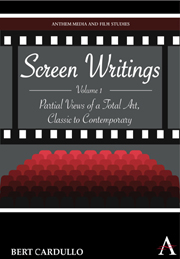Book contents
- Frontmatter
- Contents
- List of Illustrations
- Introduction: The Necessary Film
- Part I Children and the Cinema
- Part II Literature and Adaptation
- 4 “Outing” Edward, Outfitting Marlowe: Derek Jarman's Film of Edward II
- 5 Theater and Fiction into Film: Notes on Paradigmatic Scenes and Emblematic Adaptations
- Part III Views and Interviews
- Part IV World Enough and Time
- Bibliography of Related Criticism
- Index
- Plate section
5 - Theater and Fiction into Film: Notes on Paradigmatic Scenes and Emblematic Adaptations
from Part II - Literature and Adaptation
Published online by Cambridge University Press: 05 March 2012
- Frontmatter
- Contents
- List of Illustrations
- Introduction: The Necessary Film
- Part I Children and the Cinema
- Part II Literature and Adaptation
- 4 “Outing” Edward, Outfitting Marlowe: Derek Jarman's Film of Edward II
- 5 Theater and Fiction into Film: Notes on Paradigmatic Scenes and Emblematic Adaptations
- Part III Views and Interviews
- Part IV World Enough and Time
- Bibliography of Related Criticism
- Index
- Plate section
Summary
I would like to begin by saying something about the adaptation of drama to film, mainly because so little is understood about the process of adaptation by even the educated filmgoer. Many people still cling to the naïve belief that drama and film, for example, are two aspects of the same art, except that drama is “live” while movies are “recorded.” Certainly there are undeniable similarities between the two forms. Most obviously, both employ action as a principal means of communication: that is, what people do is a major source of meaning. Live theater and movies are also collaborative enterprises, involving the coordination of writers, directors, actors, designers, and technicians. Drama and film are both social arts in that they are exhibited before groups of people and are therefore experienced publicly as well as individually. But films are not mere recordings of plays. The language systems of these two art forms are fundamentally different, and movies have a far broader range of techniques at their disposal.
Actually, as many commentators have noted, film is closer in form to fiction than to theater. Like fiction, film can move easily through time and space, and, like fiction, film employs narration – sometimes in the first person, through subjective camera and voice-over; rarely in the third person, through the anonymous commentaries that accompany certain documentaries; and most often and most naturally in the omniscient mode, which enables a filmmaker to cut from a subjective point-of-view shot to a variety of objective shots, from a single reaction in close-up to the simultaneous reactions of several characters in medium or full shot.
- Type
- Chapter
- Information
- Screen WritingsPartial Views of a Total Art, Classic to Contemporary, pp. 51 - 86Publisher: Anthem PressPrint publication year: 2010



